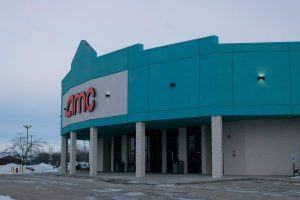Referendum refuses to die a quiet death
January 22, 2003
The District 428 School Board committee hopes to see a referendum for the third time. The board voted 4 to 1 for the referendum to be put on the April 1 ballot at Tuesday night’s school board meeting.
Since the vote wasn’t unanimous, there were some reservations and opposition resonating from within the school board itself.
School board member Susan Hildebrandt said she’d abstain from approving the referendum question for a number of reasons. She thought that since the board doesn’t know feedback from surveys that were given to schools administrations, it was cause for concern and delay in deciding whether or not a referendum should be pursued.
The surveys were a general gauging for school officials to see how administrators, teachers and custodians felt about a third referendum attempt.
Hildebrandt offered the theory of piecing the referendum by having the elementary and middle schools on the upcoming referendum. The board would then later analyze the needs of the high school, saving more than $22 million on the current referendum attempt.
School Board President Don Robinson dismissed the possibility of piecing the referendum because it would force the school board, in all likelihood, to create another referendum plan within a few years rather than the 10-year plan as outlined in the November referendum.
School Board member Don Gladden echoed Hildebrandt’s concerns, saying the timing of the referendum may be counterproductive in terms of the upcoming school board elections. He did, however, emphasize that among all the reservations he had with the referendum, one glaring point had him favoring the referendum. Because the next opportunity for the board to look at a referendum wouldn’t be until 2004, the buildings then wouldn’t be completely refurbished until 2006.
School board vice president Charles Lundgren said the community’s reactive rather than proactive mind-set may be a determining cause in the previous referendums. He worried about having to ask for more money in the form of a referendum in two to three years to meet the demands of overcrowding. Prolonging a referendum, Lundgren felt, would be detrimental to the well-being of the district.
School board member Mike Griesbaum said he too had reservations but would support the referendum because he felt the plan overall is a good one. Griesbaum also dismissed the theory of piecing the referendum because in his opinion, the high school is the most in need of extra funding. He also expressed embarrassment with how the schools seem to be falling apart and are excessively overcrowded.
“I expect a far better perception when walking through the front door,” Griesbaum said.
With the adoption of the referendum question on the April 1 ballot, the school board would look at conducting intensive workshops at the request of Robinson to better decide how the referendum should be approached and presented. Superintendent Brian Ali said the citizens referendum committee would convene and analyze the referendum as well.
“Some issues are too large to be decided by this seven team board,” Robinson said in reference to having assistance from the community.
In addition to the referendum adoption, the school board listened to a presentation by Construx of Illinois’ Mike Suhadolnik.
In reference to the referendum, Suhadolnik spoke of the school that would be built with the proposed subdivision as a K-5 school accommodating 475 students.
“We feel this is independent of your referendum,” Suhadolnik said. “We would bring homes that are environmentally efficient and meet new energy codes. I’d like to make it official that we’d like to work with the rest of the school officials to see what the needs are.”
Suhadolnik said to proceed, he’d need a recommendation from the school board. The board decided to consider Suhadolnik’s request and would look at it further during the Feb. 3 meeting. Until then, Robinson said the current recommendation to the city is to have the school board reject Savannah Green.






